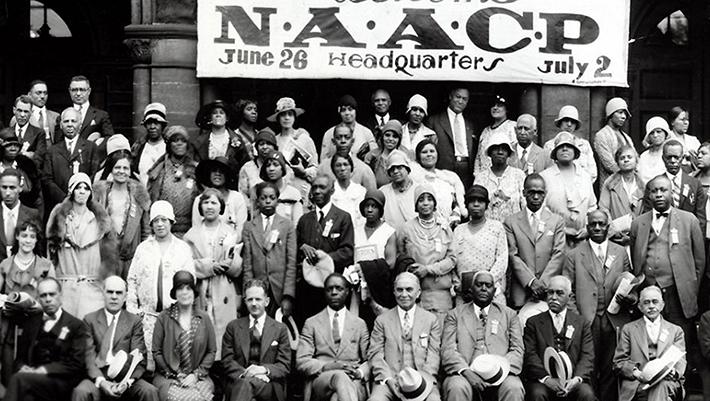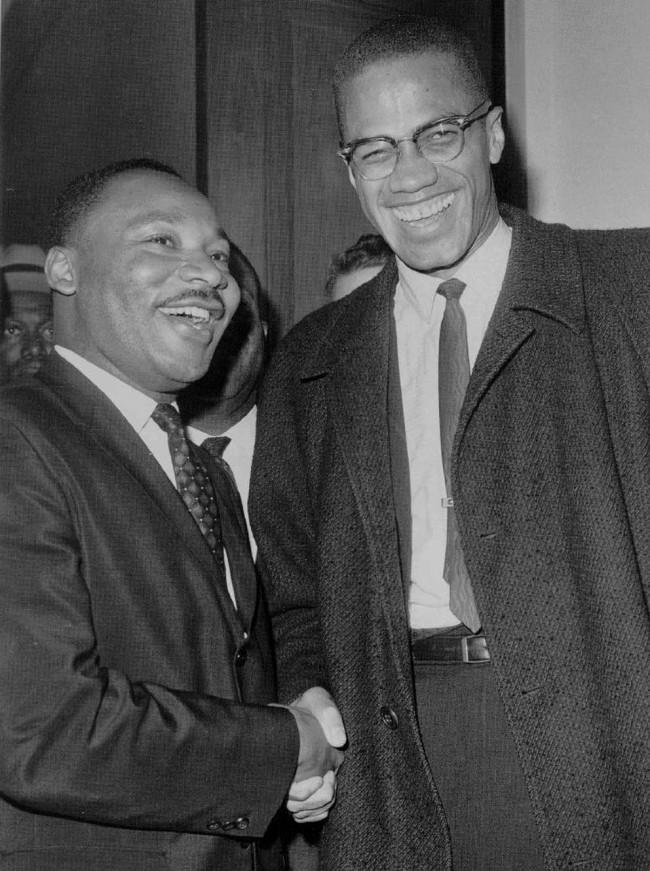

Table of Contents
The unfinished revolution – The Civil Rights Movement
Introduction
Up until recently the most common perspective of the Civil Rights Movement was that it represents a victory for African Americans and overall equality. However, recent unrest that permeated the American society questions such interpretations, as racial tensions are spurring once again. So the question arises – was the Civil Rights Movement successful or not?
The roots of the idea
For a long time, the story of the Civil Rights Movements began in the early 50s with Brown v. Board of Education case or somewhat less commonly with Rosa Parks’ bus boycott. Such narrowing was the subject of dissecting the Afro-American struggle of the 1950s and 1960s as one separate and unique event. Despite such classification having some strong points in terms that it had specific features and context, it could be seen as misleading. The reason why is that ever since the African Americans were forcibly brought to the United States, they tried to achieve some basic rights. Thus, some scholars somewhat pretentiously date the start of the Civil Rights Movement as far back as 1619.
Jim Crow laws
A more reasonable interpretation is that it began after the Civil War (1861-1865), as before that their struggle was for freedom and human rights. Afterward, their leaders turned towards political and legal rights – a cornerstone of civil rights. Such struggles were primarily aimed against the discriminatory Jim Crow laws, which were legitimized through Plessy v. Ferguson (1896). The basic idea of these laws was “separate but equal”, leaving the US society one of clear segregation. Coupled with that was the economic and educational issues that plagued the African American population, as their access to schooling and better jobs was largely unresolved after their liberation. Finally, many states curbed the political rights of the colored population by introducing various regulations that determined voting rights based upon income or literacy. With that in mind, early African American leaders and spokespersons like Frederick Douglass, Booker T. Washington, or W. E. B. Du Bois could be heralded as early Civil Rights Movement pioneers.
NAACP
If the late 19th century seems too historically removed, the formation of the National Association for the Advancement of Colored People (NAACP) in 1909 could also be seen as the seed of the Civil Rights Movement, as that organization carried a brunt of its legal battles in the 50s and 60s. In fact, the NAACP began its mission in educating and swaying the public eye through courts as far back as 1915 and the case of Guinn v. United States. This association continued its crusade through courts and cases through the 1920s and 30s, focusing on desegregation of education, a victory achieved only in 1954 and the already mentioned Brown v. Board of Education.

A picture of NAACP headquarters from 1929. seattlemedium
MOWM
Finally, another starting point that can be chosen is formation of theMarch on Washington Movement (MOWM) in 1941. This organization planned a march on the US capitol to protest racial discrimination in the military and defense industry. The march itself never occurred, as President Roosevelt created the Fair Employment Practices Committee. Though it was aimed only at improving racial integration in the munitions factories, it was an important step forward as it was the first presidential order for civil rights since the Reconstruction era. The World War II era proved to be crucial for the formation of the modern Civil Rights Movement. During that period many African Americans served in the military, while more got access to jobs that were closed off for them before the war. Both of those helped them to gain economic stability and social awareness that their struggle for rights wasn’t finished in 1865 as well as that they had enough sway to break new grounds. An additional factor that worked in favor of the African American awakening was US foreign policy which presented itself as guardian of freedom and liberty worldwide. Such an image was only strengthened by the emergence of the Cold War in the late 1940s.
The struggle goes mainstream
Executive Order 9981
The first major step towards attaining some level of equality in the US society came in 1948 when President Truman issued Executive Order 9981, ending segregation in the military. In the following years, the African American population began to feel more restless, yet there was little activity among them, partially as many leaders feared being labeled a communist. Nevertheless, the NAACP continued its legal crusade, before they finally won Brown v. Board of Education. This was such a landmark moment for two important reasons. One was that the Jim Crow segregation was shut down by the Supreme Court, though only in the realm of education. At least as much as significant was the publicity that followed this case. That was enough to light the spark of dissatisfaction among the colored population, as they were tired of waiting for the change. They were finally ready to act.
Martin Luther King and Malcolm X
Soon afterward, in late 1955, Rosa Parks’ arrest for refusing to give up her seat to a white person sparked a boycott in Alabama. At that moment, Martin Luther King Jr. arose as one of the primary leaders of what was becoming known as the Civil Rights Movement. He was a prominent leader of the peaceful current among the activists, as he advocated for sit-ins, boycotts, and nonviolent protests as the right path towards equality and rights. King feared that violence would only backfire upon the African Americans in both politically and physically, through governmental repression. However, not all had the same viewpoint. At roughly the same time, Malcolm X gained some eminence as a promoter of a violent uprising as a form of attaining civil rights, claiming that all the great revolutions – American, French, and Russian, were won through bloodshed. With that, the African Americans began their struggle through a wide array of activities, from peaceful protest to riots, depending on what caused them and who organized it.

A picture of the only time King and Malcolm X met in 1964 - vinlopresti
Other leaders
Nevertheless, it would be wrong to narrow down the Civil Rights Movement to solely these two arguably most famous leaders. There were many others like Bayard Rustin, Ella Baker, Robert F. Williams, Roy Wilkins, John Lewis, Septima Poinsette Clark, to mention a few. Furthermore, King and Malcolm X are often depicted as rivals or opposites, which would be untrue. They had great respect for each other, while their ideas evolved through the years. By the early 1960s, Malcolm X softened his stance towards violence while in 1968 King recognized riots as a viable though still not a favorable form of protests. In the end, both of them, as well as all the activists who acted in both violent and peaceful manners fought for the same goal – equality and rights.
Ongoing struggle
From the late 50s and throughout the 60s there were numerous protests, boycotts, riots, and campaigns of all sorts, both local and on a grander scale. Probably most memorable was the Great March on Washington in 1963. Such actions, both nonviolent and aggressive, forced both the government and the general public to deal with what has become a burning issue. Some organizations like the infamous KKK and other hate groups, as well as racist individuals, attacked the African American activists. These attacks were not uncommonly aided by local government branches which turned a blind eye to it more often than not. Such acts only further militarized parts of the Civil Rights Movement, like the Black Panthers. On the other hand, some progressive individuals and organizations stood with the African Americans in their struggle. However, most important was the reaction of the federal government which finally realized something had to be done if peace was to be restored.

The front line of demonstrators during the 1963 March on Washington. aarp
The Legislative Process
Through several Civil Rights acts (1957, 1960, 1964, 1968), the Voting Rights Act (1965) and 24th Amendment (1964), as well as several other Supreme Court cases, the central government finally passed legislation that enforced the proposed liberties won by the African Americans after the Civil War. With that in mind, the Civil Rights Movement achieved its core goal – the desegregation of the US society. Such progressive legislation did lead to a better political position of the colored population, for example, the number of elective public offices they held jumped from 100 in 1965 to over 7000 in 1990. Furthermore, many gained the right to vote, access to education, and better jobs. Open racism became the enemy, with the best example being the FBI cracking down on the KKK. With all that in mind, the Civil Rights Movement is undoubtedly a victorious moment for the colored people in America.
Conclusion
Yet, this sentiment arises only if we look at it as an isolated moment in the United States history. In contrast, if we look at a grander perspective, taking account of the entire struggle for African American equality and rights, it was only one of many steps towards the ultimate goal. After the movement had died down in the late 60s and early 70s, it was clear that segregation and racism remained part of the American culture, though much less visible. African Americans remained one of the most economically endangered groups, leading by the poverty percentage and wage gap, while also constituting over 50% of the incarcerated population. And while racism is beaten in legal terms, it remains strong in individuals, as it remains societally rooted in parts of the US. Furthermore, de facto segregation remains in large portions of America, with churches, schools, and even entire neighborhoods still endure as either almost exclusively white or black. Reasons for this are numerous, yet they signal that the Civil Rights Movement still hasn’t fully attained its goal.
Such sentiments are only exuberated by both the recent media evidenced police brutality against the African Americans as well as the resulting Black Lives Matter movement, which in its core is a continuation of the Civil Rights Movements. With that in mind, it is more accurate to label the Civil Rights Movement as the unfinished and ongoing revolution, spanning more than a century, with what seems still a long way to go. As for the question of violent or nonviolent - it remains without a clear answer. Yet it is vital to remember that many have lost their lives, including Malcolm X (1965) and King (1968), in the pursuit of liberty, rights, and equality.
Online sources
-
Did WW-II launch the civil rights movement?
Sources/Further reading
-
James Ciment, Atlas of African American history, Facts On File, 2007.
-
Colin A. Palmer, Encyclopedia of African-American culture and history: The Black experience in the Americas Vol.1-6, Thomson Gale, 2006.
-
William T. Martin Riches, The Civil Rights Movement Struggle and Resistance, MACMILLAN PRESS, 1997.
-
Bruce J. Dierenfield, The Civil Rights Movement, Routledge, 2013.
-
Gladys L. Knight, Icons of African American protest: trailblazing activists of the civil rights movement, Greenwood Press, 2009.
-
Manning, Marable and Leith Mullings, Let nobody turn us around, Rowman & Littlefield Publishers 2009.
-
John A. Kirk, The civil rights movement: a documentary reader, John Wiley & Sons, 2020.
-
Arvarh E. Strickland and Robert E. Weems, Jr., The African American experience: a historiographical and bibliographical guide, Greenwood Press, 2001.
